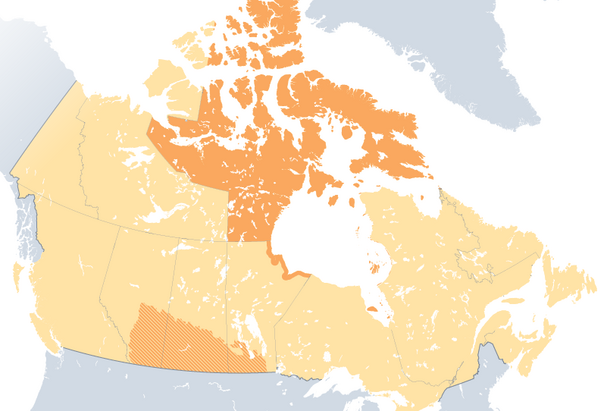
How Canada stacks up in science against its closest competitors
A visual overview of investment, collaborations and institutional stand-outs.
19 November 2021
Data analysis by Catherine Cheung; infographic by Catherine Armitage and Tanner Maxwell

A global competitor in high-quality research, Canada was ranked seventh in the Nature Index in 2020, ahead of South Korea at eighth, and behind France at sixth.
The Nature Index tracks output in 82 selected natural-sciences journals using the key metric Share, a fractional count for an article that accounts for the proportion of authors whose institutional affiliation is with that institution or location.
Since 2015, Canada has retained its position among the top 10 countries for high-quality research output, as has France. South Korea replaced Switzerland in eighth place in 2020.
Global comparison
Canada ranks 7th in the world for high-quality natural-sciences research based on Share in the Nature Index. The top four countries by this measure (not shown here) are the United States, China, Germany and the United Kingdom.
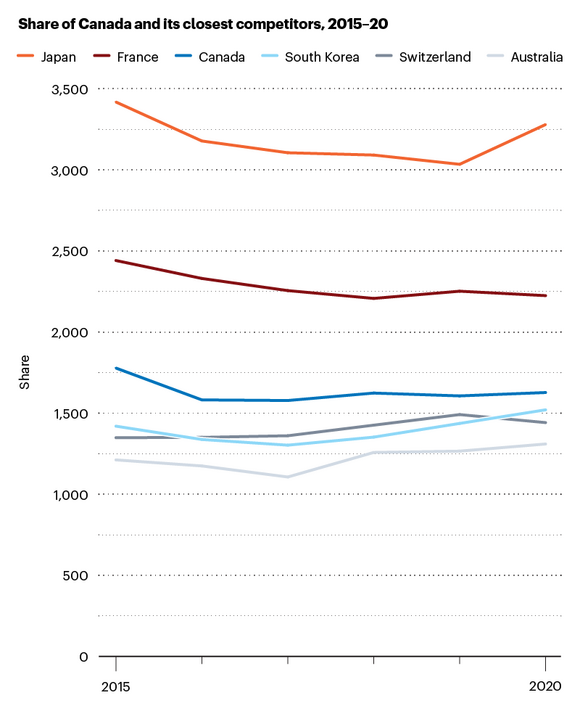 Source: Nature Index
Source: Nature Index
Canada’s proportion of internationally collaborative papers in the Nature Index is slightly less than France or Switzerland’s, but higher than Japan’s and South Korea’s.
Its biggest collaborative partner by far is the United States (9,243 co-authored articles 2015–20) followed by China (3,157 articles over the same period).
 Source: Nature Index/
Source: Nature Index/
Among the leading eight countries in the Nature Index by Share, Canada was second only to the United Kingdom in delivering value for research funding in 2019, measured by the amount of Share achieved for each US$1 billion spending on research and development.
In the same year, Canada achieved Share of 57.9, three times more than South Korea or Japan achieved.
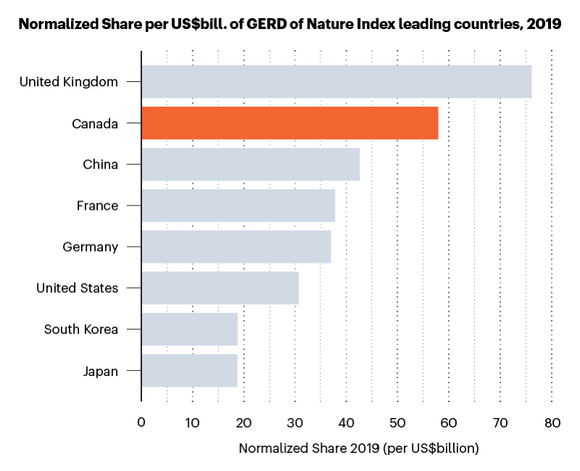 Source: Nature Index
Source: Nature Index
Canada has the lowest population density among its closest competitors. For Share per million of population in 2020, it is a distant second to Switzerland.
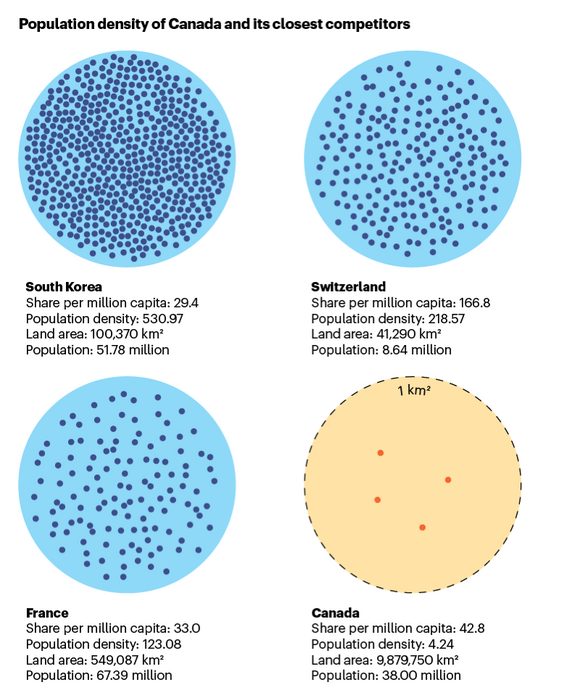 Source: Nature Index/UNESCO
Source: Nature Index/UNESCO
Area of study
Canada’s universities, including the leading 30 by Share, are concentrated in the more densely populated south of the country.
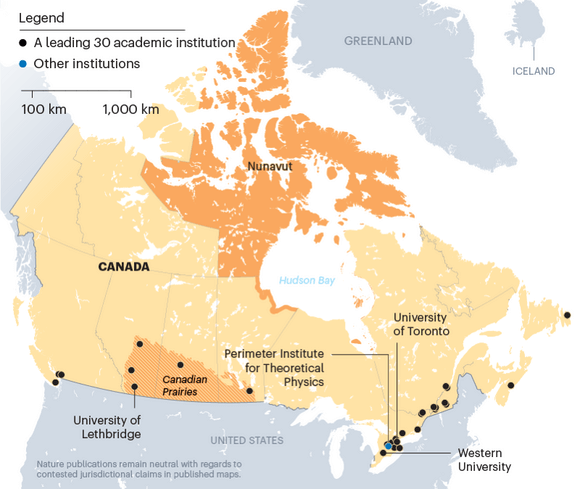 Source: Nature Index
Source: Nature Index
The Canadian Rockies in the west, the Arctic north, the prairies, the Canadian Great Lakes and the Experimental Lakes Area of Ontario, offer a vast natural laboratory for research.
Roughly 85% of the 35,944 residents of Nunavut, the largest and northernmost territory of Canada, are of Aboriginal identity. Indigenous hunters in Nunavut provide polar-bear researchers with fur and tissue samples for study.
The University of Lethbridge in Lethbridge, Alberta rose faster than any other academic institution by change in adjusted Share 2015–20, although from a low base, to 28th position in 2020.
The Canadian Prairies — primarily concentrated in this rough area across Alberta, Manitoba, and Saskatchewan — are home to more than 70% of the country’s arable farmland.
Western University in London, Ontario, was the second-fastest rising academic institution by change in adjusted Share 2015–20 to reach 10th position by 2020.
When the ice retreats on the inland sea of Hudson Bay in summer, polar bears come ashore along its western coast in northeastern Manitoba, where researchers track and tag them.
The University of Toronto had the highest Share of any Canadian institution overall and in all four subject areas in the Nature Index in 2020, with 21.1% of the national Share.
The non-profit Perimeter Institute for Theoretical Physics in Waterloo, Ontario is the highest performing non-academic Canadian institution in the Nature Index, in 9th position overall in 2020.
This article is part of Nature Index Canada, an editorially independent supplement. Advertisers have no influence over the content.
